October 2020
October 21, 2020
St. Louis Heat Experiment
Google Arts & Culture hosts a series of images showing a bizarre-looking experiment conducted at the St. Louis University Medical School in 1956. The photos were taken by Life photographer Albert Fenn.Google offers no more details about the photos, but some searching reveals the same photos on Getty Images where they're identified as "an experiment about the effects of heat on a body during highspeed jet flight."
Who the researcher was, I don't know.





Posted By: Alex - Wed Oct 21, 2020 -
Comments (0)
Category: Experiments, 1950s
Chartreuse
A song even more topical today than it was seventy years ago.
Posted By: Paul - Wed Oct 21, 2020 -
Comments (1)
Category: Music, 1950s, Hair and Hairstyling
October 20, 2020
Laboratory Land
At a 1932 meeting of the British Association, scientist Miles Walker proposed the creation of a colony, initially to consist of 100,000 people, that would be entirely "under the auspices of engineers, scientists and economists." He suggested that it might be located somewhere in North America, or perhaps France. And he figured that the colony would be so successful that it could eventually be expanded to include the entire world.Walker didn't offer a name for his new colony, but the media dubbed it "Laboratory Land." More details from New Scientist (Aug 25, 1983):
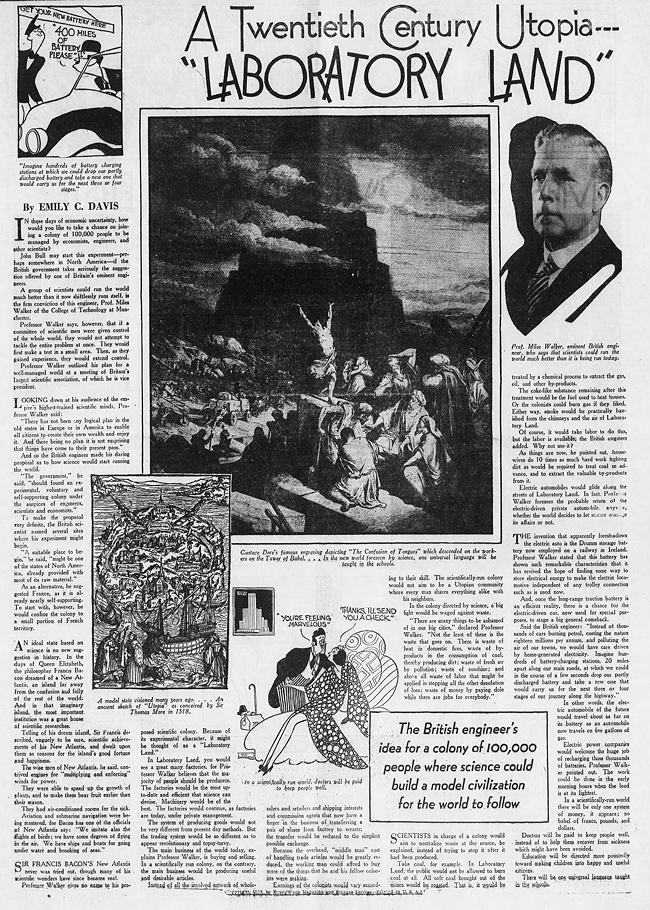
Santa Cruz Evening News - Apr 1, 1933 (click to enlarge)
The key to the success of the colony, he believed, would be its efficiency and elimination of waste. Interestingly, one of the things he had in mind that would allow this efficiency was electric cars:
Almost 100 years later, and we're slowly working our way toward Walker's vision. At least, we are here in California where, by 2035, all new cars will have to be emission-free.
Posted By: Alex - Tue Oct 20, 2020 -
Comments (6)
Category: Utopias and Dystopias, 1930s, Yesterday’s Tomorrows
Miss Nebraska Stockgrower
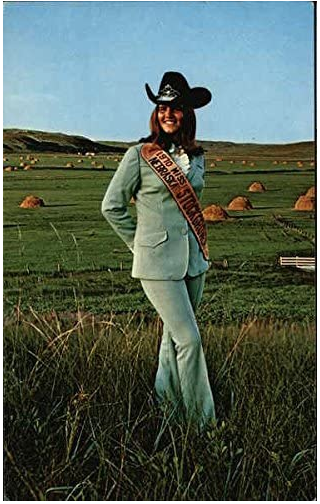
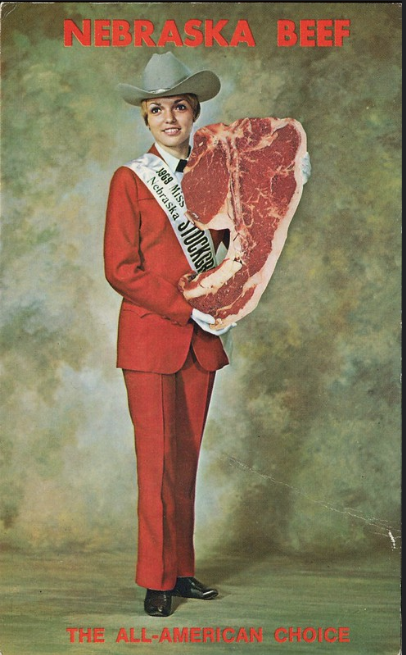
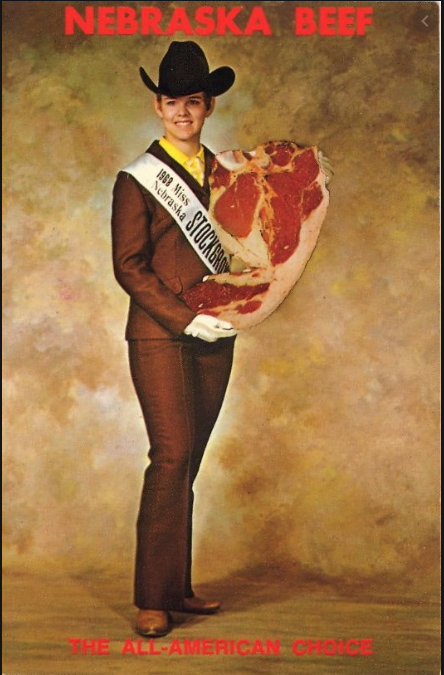
Posted By: Paul - Tue Oct 20, 2020 -
Comments (0)
Category: Awards, Prizes, Competitions and Contests, Beauty, Ugliness and Other Aesthetic Issues, Food, Regionalism, 1960s, 1970s
October 19, 2020
Living in a grocery store
Here's one for the 'unauthorized dwellings' category: man found living in the ceiling of a Raley's grocery store.Employees called authorities who surrounded the store. After a while, they got him to come outside and he was arrested for commercial burglary.
Authorities said Hammar had been living in area above the deli for at least a couple of days, and had been stealing food from the store. They say they found some of his property in the rafters.


Posted By: Alex - Mon Oct 19, 2020 -
Comments (1)
Category: Unauthorized Dwellings
Philippe Dubreuille’s Naked Woman Guitar
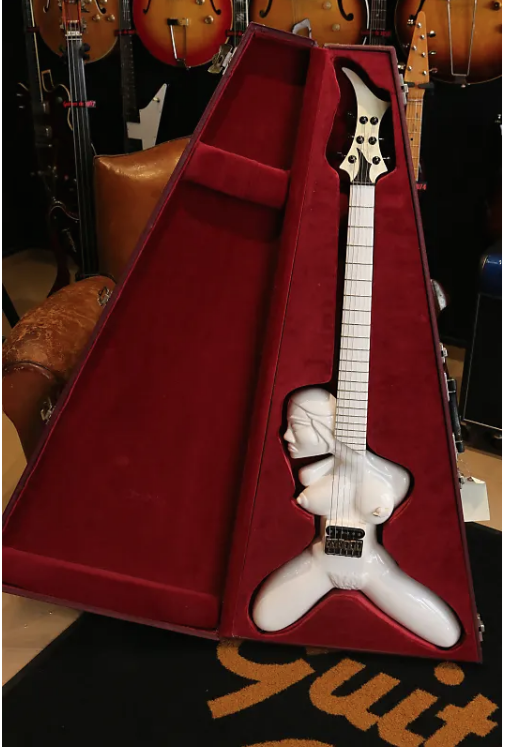
Only $10,000, including shipping.
Buy it here.
Posted By: Paul - Mon Oct 19, 2020 -
Comments (1)
Category: Excess, Overkill, Hyperbole and Too Much Is Not Enough, Ineptness, Crudity, Talentlessness, Kitsch, and Bad Art, Music, Sexuality, Women
October 18, 2020
Wrinkle Mask
Adelaide Smith was granted a patent for this "wrinkle mask" in 1911. It has a certain Bride of Frankenstein look to it.
My invention dispenses with the usual work in massaging, employed for removing the wrinkles or blemishes from the face, and can be used at any time more particularly, however, at nights while the patient is sleeping.
Posted By: Alex - Sun Oct 18, 2020 -
Comments (3)
Category: Beauty, Ugliness and Other Aesthetic Issues, Inventions, Patents, 1910s
Artwork Khrushchev Probably Would Not Have Liked 29
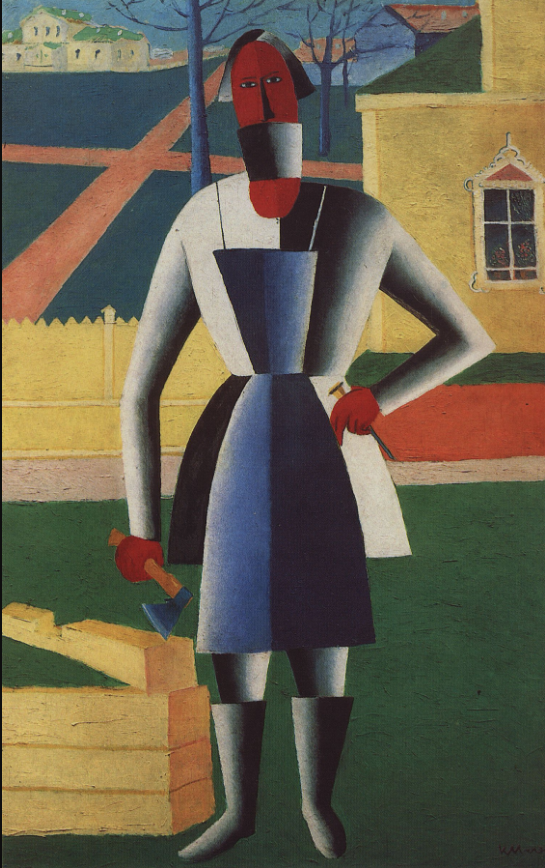
"Carpenter," 1927, Kazimir Malevich.
The artist's Wikipedia page.
His complete works here.
Posted By: Paul - Sun Oct 18, 2020 -
Comments (2)
Category: Art, Avant Garde, 1920s, Russia
October 17, 2020
Home heated by cows
Back in 1951, Swedish engineer Marten Blomquist figured out, through experimentation, that the heat from 18 cows could heat his home.I wonder how many humans it would take to heat a cow shed?
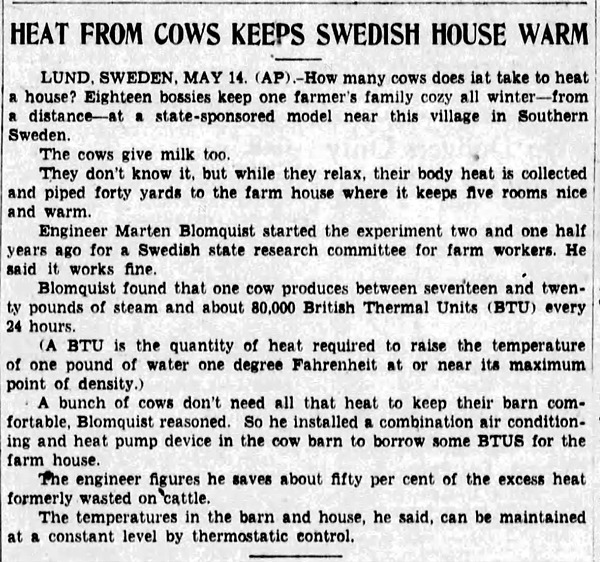
The Hanover Evening Sun - May 14, 1951
Posted By: Alex - Sat Oct 17, 2020 -
Comments (8)
Category: Cows, 1950s
Tomato
Posted By: Paul - Sat Oct 17, 2020 -
Comments (0)
Category: Anthropomorphism, Government, Police and Other Law Enforcement, PSA’s, Sexuality
| Get WU Posts by Email | |
|---|---|

| Who We Are |
|---|
| Alex Boese Alex is the creator and curator of the Museum of Hoaxes. He's also the author of various weird, non-fiction books such as Elephants on Acid. Paul Di Filippo Paul has been paid to put weird ideas into fictional form for over thirty years, in his career as a noted science fiction writer. He has recently begun blogging on many curious topics with three fellow writers at The Inferior 4+1. Chuck Shepherd Chuck is the purveyor of News of the Weird, the syndicated column which for decades has set the gold-standard for reporting on oddities and the bizarre. Our banner was drawn by the legendary underground cartoonist Rick Altergott. Contact Us |

